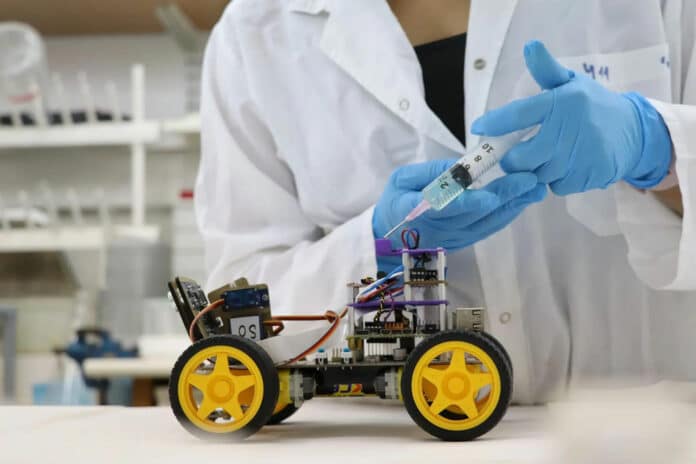Identifying chemical odors rapidly and accurately is crucial in a variety of fields. While we have heard about a number of electronic noses used for this purpose, such devices are still no match for the capabilities of biological (animal) olfactory sensors.
Now, researchers at Tel Aviv University have developed a wheeled robot that can smell using a biological sensor. The sensor sends electrical signals as a response to the presence of a nearby odor, which the robot can detect and interpret.
In their study, the researchers successfully connected the biological sensor to an electronic system using a machine-learning algorithm. The system was able to identify odors with a level of sensitivity 10,000 times higher than that of a commonly used electronic device. The researchers believe that with the success of their research, this technology may also be used in the future to identify explosives, drugs, diseases, and more.
In general, our sensory organs, such as the eye, ear, and nose – as well as those of all other animals – use receptors that identify and distinguish between different signals. Then, the sensory organ translates these findings into electrical signals, which the brain decodes as information. The challenge of biosensors is in the connection of a sensory organ, like the nose, to an electronic system that knows how to decode the electrical signals received from the receptors.
“We connected the biological sensor and let it smell different odors while we measured the electrical activity that each odor induced. The system allowed us to detect each odor at the level of the insect’s primary sensory organ,” said Prof. Yossi Yovel of the School of Zoology and the Sagol School of Neuroscience. “Then, in the second step, we used machine learning to create a ‘library’ of smells.
“In the study, we were able to characterize 8 odors, such as geranium, lemon, and marzipan, in a way that allowed us to know when the smell of lemon or marzipan was presented. In fact, after the experiment was over, we continued to identify additional different and unusual smells, such as various types of Scotch whiskey. A comparison with standard measuring devices showed that the sensitivity of the insect’s nose in our system is about 10,000 times higher than the devices that are in use today.”
“Nature is much more advanced than we are, so we should use it. The principle we have demonstrated can be used and applied to other senses, such as sight and touch. For example, some animals have amazing abilities to detect explosives or drugs; the creation of a robot with a biological nose could help us preserve human life and identify criminals in a way that is not possible today. Some animals know how to detect diseases. Others can sense earthquakes. The sky is the limit,” said Dr. Ben Maoz of the Fleischman Faculty of Engineering and the Sagol School of Neuroscience.
In future work, researchers plan to give the robot a navigation ability to allow it to localize the odor source and, later, its identity. The study could open up the future for robust and simple bio-hybrid robotics sensing devices that can be widely deployed. It could ultimately have applications such as the detection of bombs at airports or the tracking of criminals.
Journal reference:
- Shvil Neta, Golan Ariel, Yovel Yossi, Ayali Amir, Maoz M.Ben. The Locust antenna as an odor discriminator. Biosensors and Bioelectronics, 2023; DOI: 10.1016/j.bios.2022.114919
